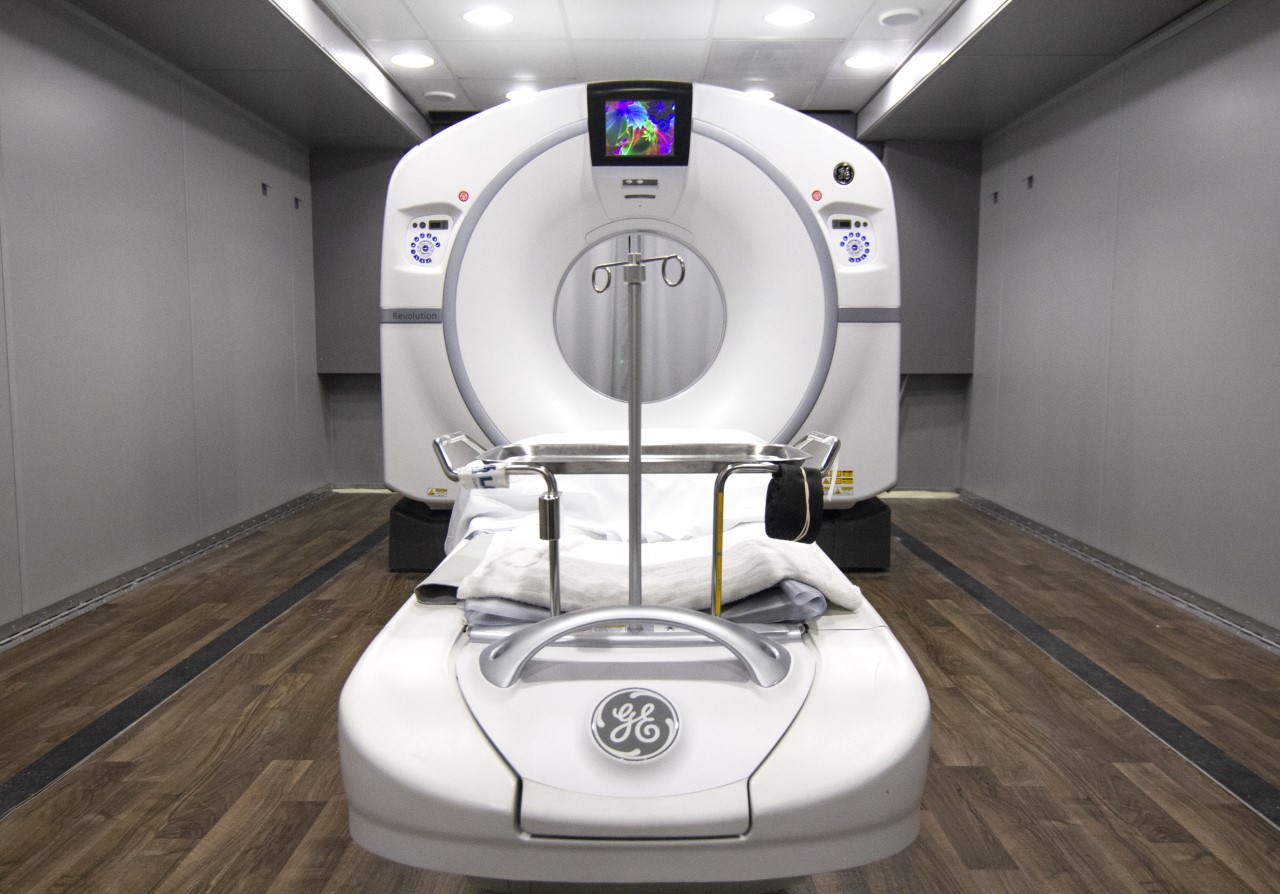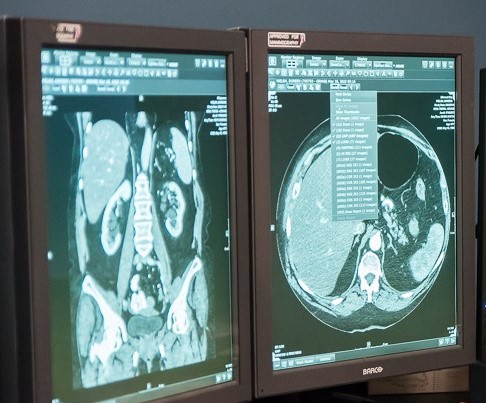What to Expect
Before scheduling or arriving for your CT Scan
Tell your doctor if you're pregnant or might be pregnant.
Women should always tell their doctor and technologist if they are pregnant or breastfeeding.
Although the radiation from a CT scan is unlikely to injure your baby, your doctor may recommend another type of exam, such as ultrasound or MRI, to avoid exposing your baby to radiation. At the low doses of radiation used in CT imaging, no negative effects have been observed in humans.
Tell your doctor if you are allergic to contrast material.
In certain cases, your doctor may recommend that you receive a special dye called contrast material. This can be something that you are asked to drink before your CT scan, or something that is given through a vein in your arm. Although rare, the contrast material can cause an allergic reaction.
Most reactions are mild and result in a rash or itchiness. In rare instances, an allergic reaction can be serious, even life-threatening. Tell your doctor if you've ever had a reaction to contrast material.
CT scanning usually takes less than 15-30 minutes. Some tests are shorter or longer, based on the number of areas tested. If an enhancing agent is used, the test will take longer.
Depending on which part of your body is being scanned, you may be asked to:
- Wear comfortable clothing without zippers, metal buttons, or snaps.
- Take off some or all of your clothing and wear a hospital gown
- Remove metal objects, such as a belt, jewelry, dentures and eyeglasses, which might interfere with image results
- Refrain from eating or drinking for a few hours before your scan
A special dye called contrast material is needed for some CT scans to help highlight the areas of your body being examined. The contrast material blocks X-rays and appears white on images, which can help emphasize blood vessels, intestines or other structures.
Contrast material might be given to you:
-
By mouth. If your esophagus, abdomen or pelvis is being scanned, you may need to swallow a liquid that contains contrast material.
-
By injection. Contrast agents can be injected through a vein in your arm to help your gallbladder, urinary tract, liver or blood vessels stand out on the images. You may experience a feeling of warmth during the injection or a metallic taste in your mouth.
During the exam
CT scanners are shaped like a large doughnut standing on its side. You lie on a narrow, motorized table that slides you through the opening into a tunnel. Straps and pillows may be used to help you stay in position. During a head scan, the table may be fitted with a special cradle that holds your head still.
While the table moves you into the scanner, detectors and the X-ray tube rotate around you. Each rotation yields several images of thin slices of your body. You may hear buzzing and whirring noises.
A technologist in a separate room can see and hear you. You will be able to communicate with the technologist via intercom. The technologist may ask you to hold your breath at certain points to avoid blurring the images.
After the exam
After the exam you can return to your normal routine. In some cases, you may be asked to wait for a short time before leaving to ensure that you feel well after the exam. After the scan, you'll likely be told to drink lots of fluids to help your kidneys remove the contrast material from your body.
Results
Brighton’s board-certified radiologist studies your CT scan and provides the results to your doctor.


